Charging Infrastructure Research: Three Modes for Self-Building and Operation of OEM’s Charging Piles
Global charging pile ownership surged, while high-power fast charging network leads the growth
As of the end of 2020, there are over 11 million units of EVs on the road worldwide. Although global automotive industry suffered downturn under the impact of the COVID-19, global EV registration grew by 41% in 2000. According to IEA (International Energy Agency) data, global EV sales volume is expected to be 15 million units to 20 million units by 2025.
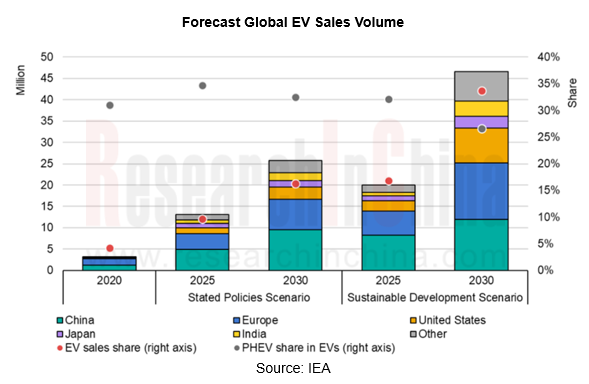
Under this background, government of each county fastens planning and construction of charging piles. Based on IEA’s statistics, number of EV charging infrastructures worldwide in 2020 amounted to 9.5 million units, including 2.5 million units public ones. Conservatively forecast, global EV charging infrastructures will increase to around 50 million units, including nearly 10 million units of public one.
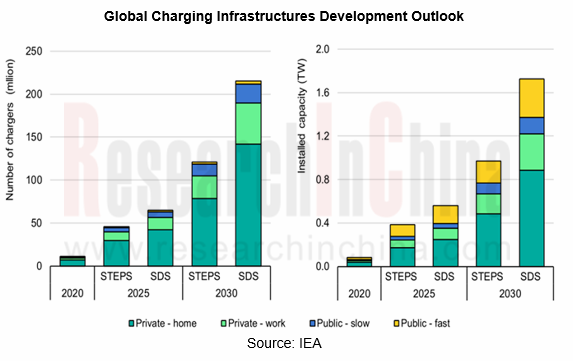
Currently, China’s charging pile ownership ranks first in the world. As of the end of 2020, China’s new energy vehicle ownership reached 4.92 million units, and number of charging piles amounted to 1.68 million units. Among them, number of private and commercial charging piles (including public and special) hit 874,700 units and 806,000 units, respectively, while car-to-pile ratio was 0.34 to 1.
It is estimated that China’s new energy vehicle ownership will amount to 17.82 million units by 2025 and number of charging piles will approximate 9.39 million units. Among them, number of private and commercial charging piles (including public and special) will hit 6.18 million units and 3.21 million units, while car-to-pile ratio will be 0.53 to 1.
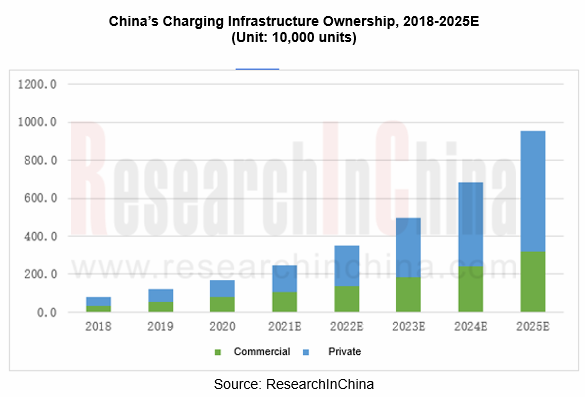
At present, China's highway fast charging network has basically taken shape, ranking first in the world. By 2020, a total of 2,251 charging stations and 9,065 charging piles have been built on 42 highways, with a service mileage of 54,000 kilometers, accounting for 35% of the total mileage of highways nationwide. According to the summary of bidding information for highway charging equipment of the State Grid over the years, highway charging piles are mainly 80 KW to 160 KW, and 240/480 KW super-power super-charging piles have been laid.
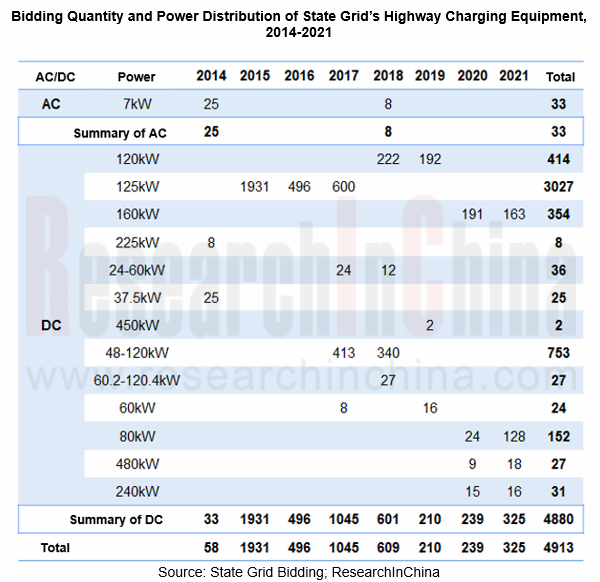
Medium and high-end intelligent EV brands vigorously layout charging network construction
Added value of intelligent EV brands has increased significantly, bringing about consumption upgrading in the automobile industry. Apart from intelligence and quality of the vehicles, charging quality improvement is also important. An article (Can the Battery Swap Mode that NIO and BAIC BJEV Both Bet on Overturn the industrial ecology?) released by ResearchInChina in August 2018 clearly pointed out that NIO builds a closed business scenario via battery swap mode to greatly enhance its brand value and service level, which is a very clever business strategy.
Many OEMs have also realized the importance of closed (or semi-closed) charging network. Medium and high-end start-up brands such as Tesla, NIO, Xpeng, Lixiang and other, as well as high-end EV brands of traditional OEMs, such as Geely ZEEKR, GAC Aion, BAIC ARCFOX, SAIC R, VW ID, etc., have begun or planned to layout in super charging station sector.
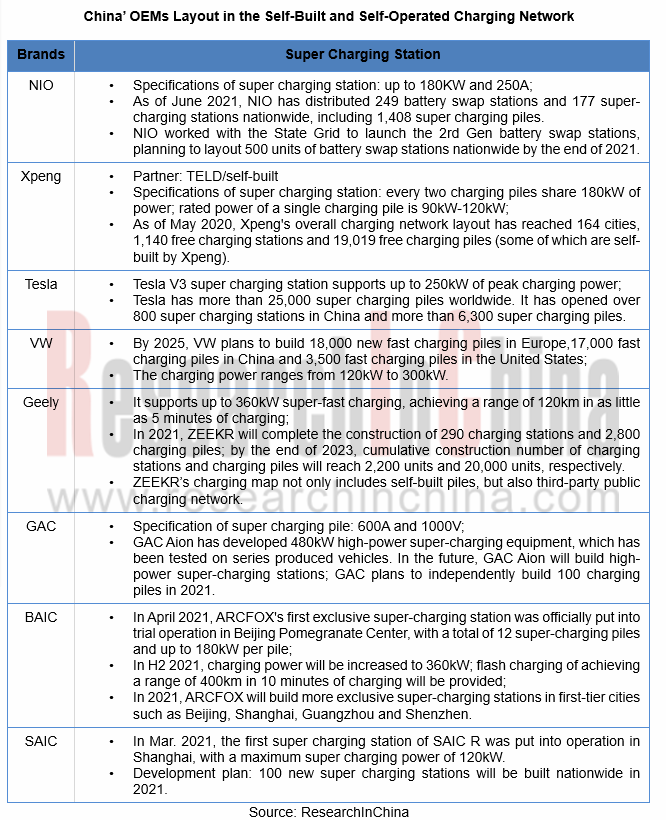
According to our analysis, OEMs currently mainly adopts three charging network construction and operation modes:
Mode 1: Fully self-built and self-operated "closed supercharging" system
This mode demands high costs and very high market ownership to maintain operation, represented by Tesla. In China, Tesla has laid a large number of charging piles. Although it has successively switched to the national standard interface, in fact Tesla's charging network is rarely open to the public, being a very closed charging network. Tesla has always claimed that it will allow to open super-charging piles to its peers, but we believe that the possibility of opening up in the short term is very small.
Tesla has built over 800 super charging stations and 6,300 super charging piles in China, supporting more than 710 destination charging stations, with charging network covering more than 290 cities. In 2021, its super charging pile factory in Shanghai was put into operation, with an initial planned annual production capacity of 10,000 units, mainly V3 super charging piles.
With extensive laying of Tesla's closed charging network, Tesla has actually formed a strong consumer barrier in China. Even if it faces many doubts in the short term, it will still occupy an important position in China in the long run. Its closed charging network has become one of the key factors for enterprises to achieve successful operation.
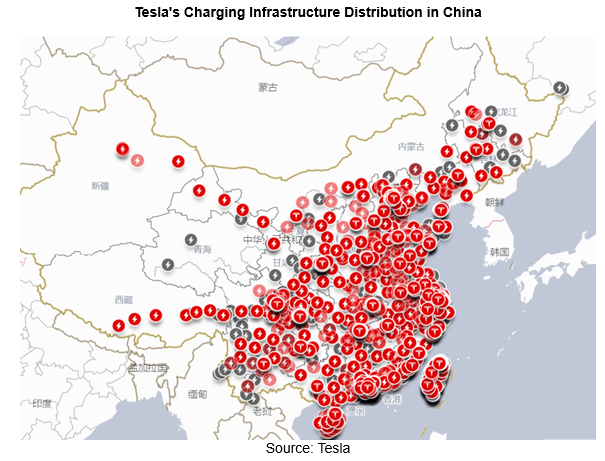
Mode 2: Fully self-built and self-operated "closed battery swap + open supercharging" system
Apart from supercharging station, battery swap station is also the main way for the charging layout of OEMs. NIO regards battery swap business as one of its core business models. It introduced car-electricity separation mode and led the establishment of Wuhan Weineng Battery Asset Co., Ltd. to be responsible for the management and operation of batteries.
In April 2021, NIO worked with State Grid to deploy the 2nd Gen of battery swap stations nationwide. Its brand-new battery swap technology supports the function of in-car one-button battery swap, eliminating the need of getting off the bus. Up to 312 battery swap services are provided every day, effectively improving battery swap efficiency.
As of June 2021, NIO has laid out 249 battery swap stations and 177 super-charging stations nationwide, including 1,408 super-charging piles. NIO partnered with State Grid to release the 2nd Gen battery swap station, planning to layout 500 units of battery swap stations nationwide. With the gradual improvement of NIO's car charging and battery swap network, we predict that NIO may properly lower the brand pricing to occupy the market of RMB 250,000 to RMB 350,000 range.
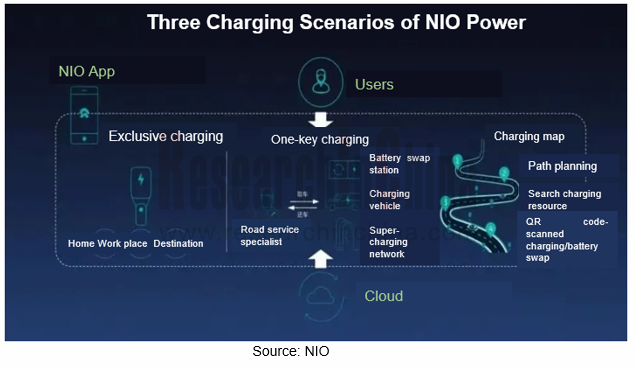
Mode 3: Cooperative "Open supercharge" system + partial self-built and self-operated "closed supercharge" system
Differed from the relatively closed charging network construction and operation modes of NIO and Tesla, Xpeng mainly cooperates with third-party operators such as TELD to build free supercharging network, greatly reducing network laying and operation costs.
In addition, Xpeng has also started the construction of its own-brand exclusive charging stations similar to those of Tesla and NIO so as to further upgrade charging brand service. By the end of 2021, Xpeng will plan to build over 500 units of branded super-charging stations. We expect that Xpeng will raise the price of its pure electric SUV to be released, and the closed charging network will be the key breakthrough point for enhancing its brand value.
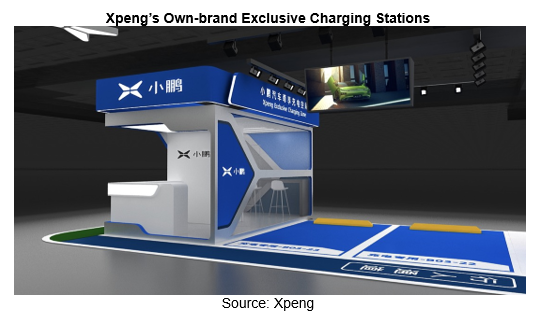
So far, Xpeng’s overall charging network layout has reached 164 cities, 1140 units of free charging stations and 19,019 free charging piles (some of which are self-built by Xpeng), expected to cover over 200 major cities nationwide by the end of 2021. Xpeng sales have surged since the release of its Lifetime Free Charging Plan (3,000 KWh per year) in Sept.2020.
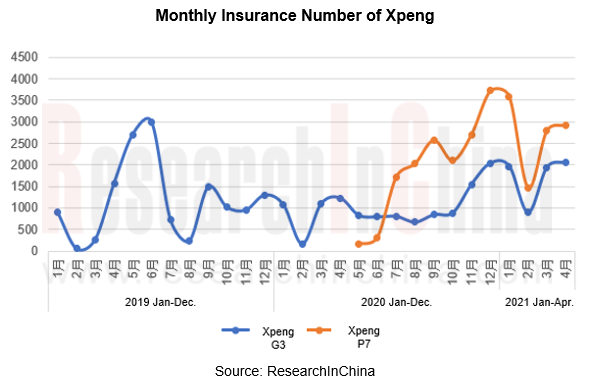
In addition, VW (China), FAW, JAC and Wanbang New Energy jointly established CAMS Kemeth, a charging operator, which adopts an operation mode similar to that of Xpeng, namely, a combination of open + partially closed (ground lock).
For other OEMs, we think that they are more likely to adopt mode 3. But each selects varied strategies and laying ideas. For instance, the newly released Geely ZEEKR is the first 800V platform model in China, supporting rapid charging at 360kW. It can drive 120km after just 5 minutes of charging. According to the plan, ZEEKR will complete the construction of 290 charging stations and 2,800 charging piles by 2021, and build 2,200 charging stations and 20,000 charging piles by the end of 2023. So far, ZEEKR’s fast charging network has not been officially unveiled.
In the future, with the promotion of 800V high-voltage fast charging architecture technology, it is a trend for both foreign-funded enterprises and independent brands to conduct product layout in high-voltage platform, and he self-built self-operated charging network of high-end intelligent EV brands will be accelerated.
New Energy Vehicle Thermal Management System Industry Research Report, 2025-2026
Policy and Regulation Drive: Promoting the Development of Electric Vehicle Thermal Management Systems towards Environmental Compliance, Active Safety Protection, and Thermal Runaway Management
Accord...
Intelligent Vehicle Redundant Architecture Design and ADAS Redundancy Strategy Research Report, 2025-2026
Research on Redundant Systems: Septuple Redundancy Architecture Empowers High-Level Intelligent Driving, and New Products Such as Corner Modules and Collision Unlock Modules Will Be Equipped on Vehicl...
Passenger Car Mobile Phone Wireless Charging Research Report, 2025
Automotive Wireless Charging Research: Domestic Installation Rate Will Exceed 50%, and Overseas Demand Emerges as Second Growth Driver.
The Passenger Car Mobile Phone Wireless Charging Research Repor...
Automotive 4D Radar Industry Research Report 2025
4D radar research: From "optional" to "essential," 4D radar's share will exceed 50% by 2030.
1. 4D imaging radar has transformed from an "optional" to a "must-have" sensor.
4D radar adds the detecti...
China Automotive Multimodal Interaction Development Research Report, 2025
Research on Automotive Multimodal Interaction: The Interaction Evolution of L1~L4 Cockpits
ResearchInChina has released the "China Automotive Multimodal Interaction Development Research Report, 2025"...
Automotive Vision Industry Report, 2025
Automotive Vision Research: Average Camera Installation per Vehicle Reaches 5.2 Units, and Front-View Tricam Installation Exceeds 1.2 Million Sets.
From January to September 2025, the total installa...
Automotive Infrared Night Vision System Research Report, 2025
Automotive night vision research: The rise of infrared AEB, with automotive infrared night vision experiencing a 384.7% year-on-year increase from January to September.
From January to September 2025...
New Energy Vehicle Cross-Domain (Electric Drive System and Powertrain Domain) Integration Trend Report 2025-2026
Electric Drive and Powertrain Domain Research: New technologies such as three-motor four-wheel drive, drive-brake integration, and corner modules are being rapidly installed in vehicles.
Electric dri...
Analysis on Desay SV and Joyson Electronic's Electrification, Connectivity, Intelligence and Sharing, 2025
Research on Desay SV and Joyson Electronic: Who is the No.1 Intelligent Supplier?
Both Desay SV and Joyson Electronic are leading domestic suppliers in automotive intelligence. "Analysis on Desay SV ...
OEMs and Tier 1 Suppliers' Cost Reduction and Efficiency Enhancement Strategy Analysis Report, 2025
ResearchInChina released the "OEMs and Tier 1 Suppliers' Cost Reduction and Efficiency Enhancement Strategy Analysis Report, 2025", summarizing hundreds of cost reduction strategies to provide referen...
Automotive Fixed Panoramic Sunroof and Smart Roof Research Report, 2025
With the intelligent application of car roofs as the core, this report systematically sorts out a series of new products such as fixed panoramic sunroof/openable sunroof, ceiling screen, roof ambient ...
Automotive-Grade Power Semiconductor and Module (SiC, GaN) Industry Research Report, 2025
SiC/GaN Research: Sales volume of 800V+ architecture-based vehicles will increase more than 10 times, and hybrid carbon (SiC+IGBT) power modules are rapidly being deployed in vehicles.
Sales volume o...
Cockpit Agent Engineering Research Report, 2025
Cockpit Agent Engineering Research: Breakthrough from Digital AI to Physical AI
Cockpit Agent Engineering Research Report, 2025 starts with the status quo of cockpit agents, summarizes the technical ...
Prospective Study on L3 Intelligent Driving Technology of OEMs and Tier 1 Suppliers, 2025
L3 Research: The Window of Opportunity Has Arrived - Eight Trends in L3 Layout of OEMs and Tier 1 Suppliers
Through in-depth research on 15 OEMs (including 8 Chinese and 7 foreign OEMs) and 9 Tier 1 ...
China Commercial Vehicle IoV and Intelligent Cockpit Industry Research Report 2025
Commercial Vehicle IoV and Cockpit Research: The Third Wave of Passenger Car/Commercial Vehicle Technology Integration Arrives, and T-Box Integrates e-Call and 15.6-inch for Vehicles
I. The third wav...
Intelligent Vehicle Electronic and Electrical Architecture (EEA) and Technology Supply Chain Construction Strategy Research Report, 2025
E/E Architecture Research: 24 OEMs Deploy Innovative Products from Platform Architectures to Technical Selling Points
According to statistics from ResearchInChina, 802,000 passenger cars with domain...
Research Report on Intelligent Vehicle Cross-Domain Integration Strategies and Innovative Function Scenarios, 2025
Cross-Domain Integration Strategy Research: Automakers' Competition Extends to Cross-Domain Innovative Function Scenarios such as Cockpit-Driving, Powertrain, and Chassis
Cross-domain integration of ...
China Autonomous Driving Data Closed Loop Research Report, 2025
Data Closed-Loop Research: Synthetic Data Accounts for Over 50%, Full-process Automated Toolchain Gradually Implemented
Key Points:From 2023 to 2025, the proportion of synthetic data increased from 2...